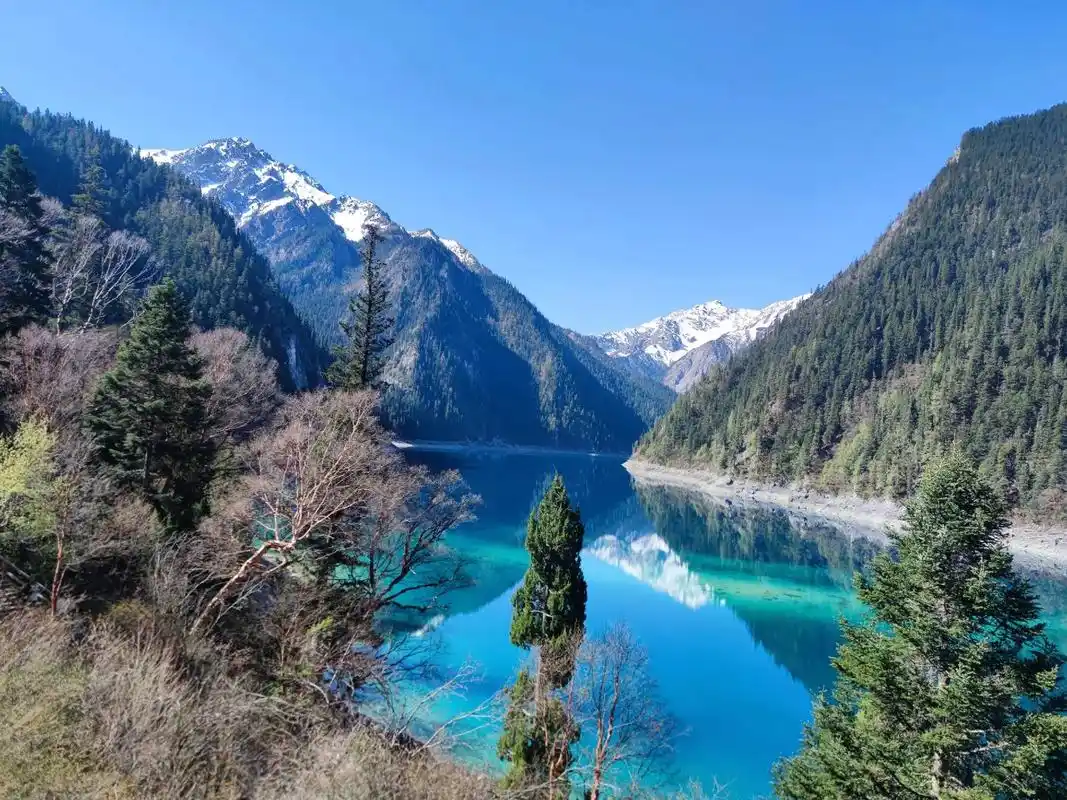Nestled in Zhangzha Town, Jiuzhaigou County, Aba Tibetan and Qiang Autonomous Prefecture of Sichuan Province, the Jiuzhaigou Scenic Area stands as one of China’s top – tier tourist destinations. It is a place that seamlessly blends natural grandeur with rich cultural heritage, captivating the hearts of visitors from around the globe.
A Glimpse into the Scenic Area
Covering an area of 62 square kilometers, with a 50 – square – kilometer touring zone, Jiuzhaigou is located on the northeast side of Gonggangling, in the southern section of the Min Mountains. It is a major tributary of the Baishui River, the upper reaches of the Jialing River in the Yangtze River system. The name “Jiuzhaigou” originates from the nine Tibetan villages within the scenic area, namely Shuzheng Village, Zechawa Village, Heijiao Village, Heye Village, Panya Village, Yala Village, Jianpan Village, Rexi Village, and Guodu Village, also known as “Heyao Jiuzhai”. Currently, only Shuzheng Village, Heye Village, and Zechawa Village remain in the scenic area. The scenic area is shaped like a human figure. The main valley, Shuzheng Valley, runs from south to north, high in the south and low in the north, opening to the north. It has two tributary valleys, Zechawa Valley in the east and Rize Valley in the west, and all the natural scenic spots are concentrated on both sides of these valleys. There are 108 differently – shaped lakes, large and small, distributed in a beaded – like pattern within the valleys.
The Alluring Attractions
The Mesmerizing Lakes
The lakes, or “haizi” in Chinese, are the crown jewels of Jiuzhaigou. These 108 haizi vary in size and shape, each with its own unique charm. Some are crystal – clear, reflecting the surrounding mountains and forests like a mirror. The water color ranges from vivid blues and greens to emerald and turquoise, changing with the seasons, weather, and time of day. For example, the Five – Flower Lake is famous for its multi – colored water, which is a result of the unique mineral content and the reflection of the surrounding plants. The lake bottom is covered with fallen trees and rocks, creating a magical underwater world that can be seen through the clear water.
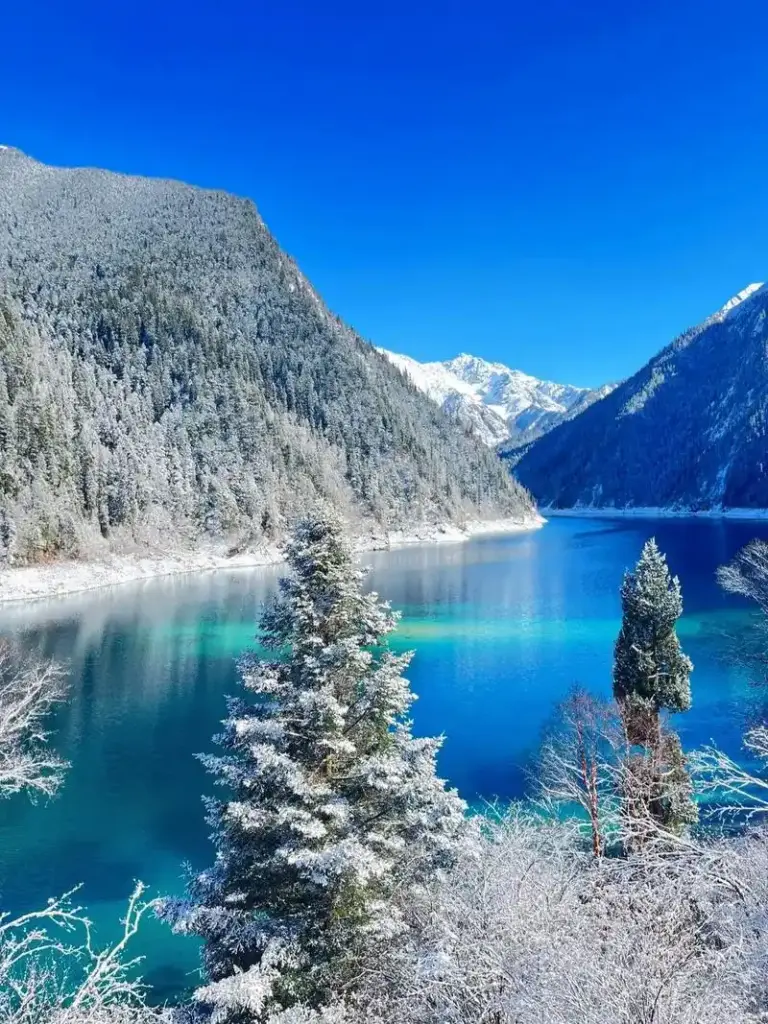
The Spectacular Waterfalls
Jiuzhaigou is also home to numerous magnificent waterfalls. The Nuorilang Waterfall is one of the most famous. It is wide and powerful, with water cascading down from a height, creating a thunderous roar. The water here is milky white, and the spray from the waterfall can be felt from a distance, adding to the sense of grandeur. Another notable waterfall is the Pearl Shoal Waterfall, which is characterized by its wide, flat – flowing water that breaks into countless droplets as it rushes over the uneven rocks, looking like a string of pearls.
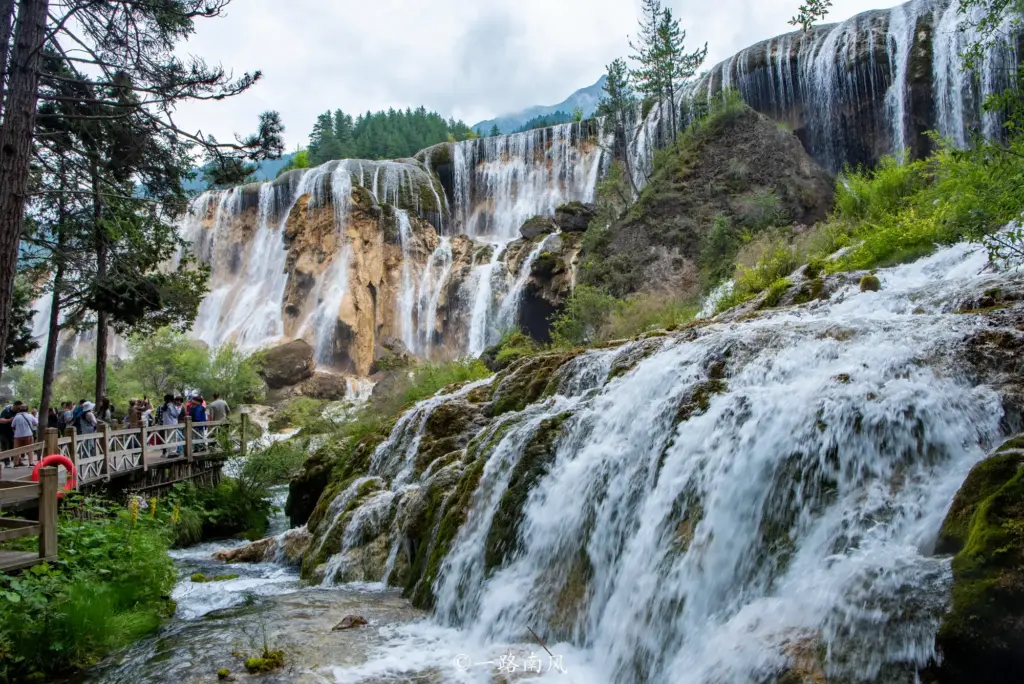
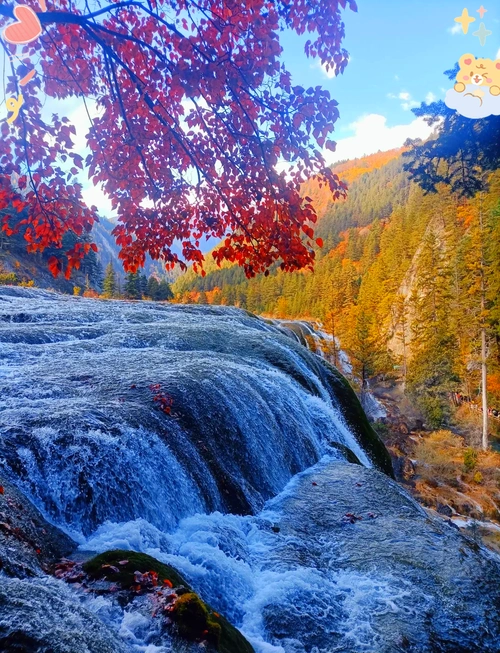
The Majestic Mountains
The Twelve Peaks of Jiuzhaigou stand tall around the valleys, forming a spectacular backdrop. These snow – capped peaks, such as Mount Shuzheng and Mount Zechawa, are covered with lush forests at the lower altitudes and snow – covered peaks at the higher altitudes. In winter, the mountains are transformed into a wonderland of ice and snow, while in summer, the greenery on the mountains makes for a refreshing contrast with the blue sky. Hiking trails around the mountains allow visitors to get up close and personal with this magnificent natural scenery.
The Mysterious Canyons
The canyons in Jiuzhaigou add to its allure. The narrow gorges, with their steep rock walls, are carved by the flowing water over thousands of years. As you walk along the canyon paths, you can feel the power of nature and the sense of tranquility. The sunlight filtering through the narrow openings of the canyons creates a play of light and shadow, enhancing the mysterious atmosphere.
The Cultural Significance
The three remaining Tibetan villages in Jiuzhaigou, Shuzheng, Heye, and Zechawa, are an integral part of the area’s charm. The traditional Tibetan architecture, with its unique wooden structures and colorful prayer flags, dot the landscape. The local people’s way of life, rich in traditions and folklore, is closely intertwined with the natural environment. Their festivals, such as the Tibetan New Year, are celebrated with great enthusiasm, featuring traditional dances, music, and religious ceremonies. The local cuisine, including butter tea and roasted yak meat, offers a taste of Tibetan culture.
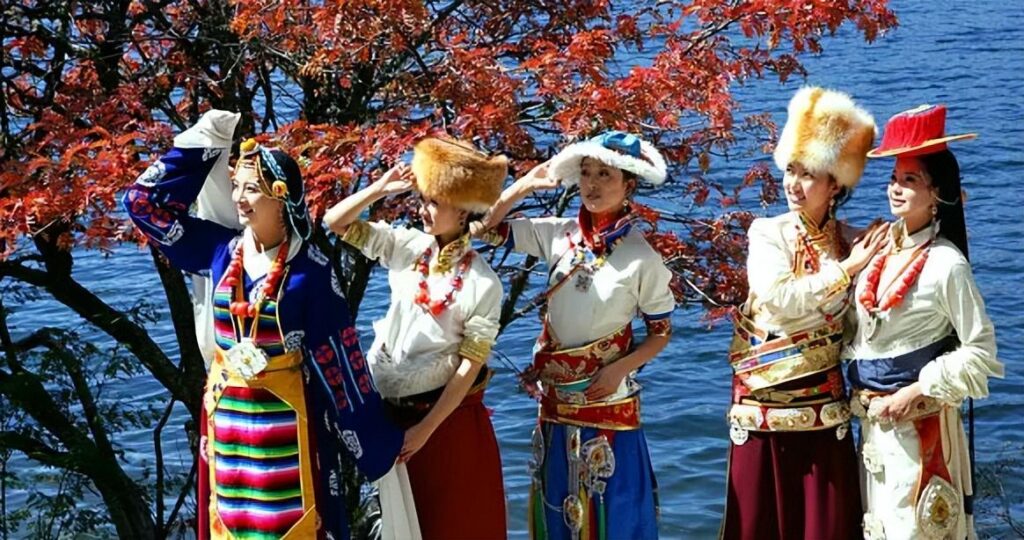
The Development and Honors
Jiuzhaigou has long been recognized for its natural beauty. It was designated as a national key scenic area in 1982. In 1992, it was inscribed on the World Heritage List by UNESCO, becoming a world – renowned natural wonder. Over the years, it has also received numerous other honors, firmly establishing its status as a premier tourist destination in China. The local government has made great efforts to protect the environment and develop sustainable tourism, ensuring that future generations can also enjoy the beauty of Jiuzhaigou.
Tips for Visiting
If you plan to visit Jiuzhaigou, here are some tips. First, it is advisable to visit during the off – peak seasons, such as spring (March – May) or autumn (September – November). Spring brings blooming wildflowers, while autumn showcases the colorful foliage of the forests. Second, wear comfortable shoes as there will be a significant amount of walking. Third, bring warm clothing, especially if you visit in winter or plan to go to higher altitudes. Fourth, consider joining a guided tour, as the guides can provide in – depth knowledge about the natural and cultural aspects of the area.
In conclusion, the Jiuzhaigou Scenic Area in Sichuan is a place that offers an unparalleled experience. Whether you are a nature lover, a culture enthusiast, or a photography buff, Jiuzhaigou has something to offer. So, pack your bags and get ready to be enchanted by this magical destination.
